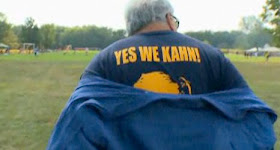Stepping Razor Blade
Contributed by Richard BoccatoSERVINGS: Makes 1 Drink
The Stepping Razor Blade fuses two old-time cocktails into one rum drink: the Holland Razor Blade (gin, lemon juice and cayenne pepper) and the Army & Navy (gin, lemon juice and orgeat).
Ingredients
-
- Ice
- 2 ounces Jamaican rum
- 3/4 ounce fresh lemon juice
- 1/2 ounce orgeat (almond-flavored syrup)
- Pinch of cayenne pepper, for garnish
Directions
- Fill a cocktail shaker with ice. Add the rum, lemon juice and orgeat and shake well. Strain into a chilled coupe and garnish with the cayenne.
Reader Note: We spent part of Memorial Day weekend perusing the new Food & Wine Cocktails 2011 Guide, which came in the mail just as we were leaving for New York. The Cocktail Guide's annual arrival is always a pleasant surprise. Like all projects of this type, some editions are more successful than others, but the editors never fail to do their best to assemble a wide-ranging assortment of unusual and interesting recipes accompanied by an informative, well-written text and cool photos. The glassware on display is always extremely beautiful, imaginative and (for us, at least) uplifting. The crystal above are "Pythagore" champagne saucers in amber and clear by J.L. Coquet, Limoges, France, available in the US from Devine Corporation (devinecorp.net). Since Caroline, Jane and I were all taken with them, we may consider purchasing some Pythagore glasses as a "welcome summer" present.
Interested readers will note that this year's new flavor seems to be elderflower. This possible trend was on view (and experienced) over the weekend when we attended the garden party given by our friends Gerry and Susanne Howard to celebrate their beautiful new garden and fabulously transformed back yard, which now resembles a classical Chinese landscape in an ancient silk scroll painting. The elderflower-flavored cocktail they offered was unlike anything I'd tasted before and was extremely delicious. Someone mentioned that Susanne became familiar with elderflower drinks during a visit she and Gerry made to France earlier this year.
Interested readers will note that this year's new flavor seems to be elderflower. This possible trend was on view (and experienced) over the weekend when we attended the garden party given by our friends Gerry and Susanne Howard to celebrate their beautiful new garden and fabulously transformed back yard, which now resembles a classical Chinese landscape in an ancient silk scroll painting. The elderflower-flavored cocktail they offered was unlike anything I'd tasted before and was extremely delicious. Someone mentioned that Susanne became familiar with elderflower drinks during a visit she and Gerry made to France earlier this year.
The other trend on view in the new F&W book is the practice of transforming traditional gin-based drinks into vodka or rum recipes, as is the case with this Stepping Razor. Although I can't be sure why this is (apart from the fact that food professionals like varying their game), I assume it relates to the fact that most people (at least the ones I speak to) say they don't like gin and it makes good commercial sense to adapt traditional recipes with well-known names to new materials. I like gin. Although it's never entirely gone away, obviously, I'm sure it will be "back" as a flavor and an ingredient someday soon. If you read enough volumes of the Food & Wine Cocktails guides or simply peruse any cooking magazines, that much is evident, always.To every food or drink thing, there seem to be an infinite number of rotating seasons.
Inevitable musical accompaniment to this brief review must be, of course, Joe Higgs' immortal Stepping Razor, performed by:
1. Peter Tosh (footage from Rockers)
2. Joe Higgs
3. The Wailers
European Black Elderflower














































